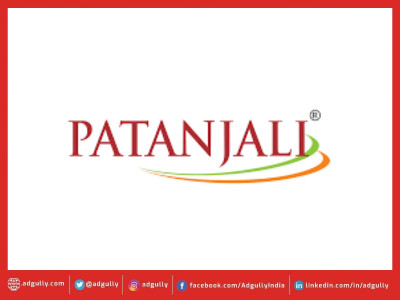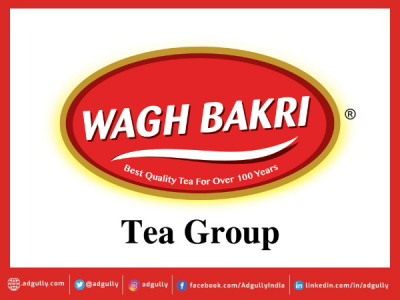Bait Marketing: The ‘truth’ behind sales, discounts and bargains
Amongst the key provisions newly introduced in the Consumer Protection Act, are those on Misleading Advertisements. Many advertisers engage in what is resorted to as ‘Bait Advertising’ or offering ‘Bargain Prices’ or ‘Offers’ to promote their products/ services. While this is legally permitted, it runs a risk of being considered as ‘Misleading’ when certain rules related to it are not adhered to. Advocate Aazmeen Kasad has listed these for the benefit of the advertising community and also referred to a few judicial precedents which deal with the same.
‘Offers’ have always been every advertiser’s means of attracting consumers and potential consumers to encourage footfalls to the stores or, in the new media age, to visit the platform (manufacturer/ marketeer’s own website or an intermediary website) where the products are sold online, and induce purchase of the goods by a consumer.
As consumers, most await an intimation (by way of a mass media advertisement, direct marketing mailer or message) of an ‘end of season sale’ or a ‘festive offer’ or an ‘introductory price offer’, to purchase a product at a ‘bargain price’.
As long as the discount or offer advertised is genuine, it is a win-win for both the advertiser and the consumer. The story takes a different twist, when the same is not true.
In the recent past, there have been a spate of complaints in respect of online offers claiming to offer massive discounts on the maximum retail price (‘MRP’) of the product. While there is nothing wrong in making such an offer if it is genuine, the issue arises when the MRP is wrongly quoted as a much higher price than is actually the case to show an exaggerated percentile of discount being offered than what is being offered as a matter of fact.
In other examples of bait advertising citing ‘Sales’, manufacturers claim to offer discounts in advertisements; however, the discounts actually offered on the products in the store don’t match what is mentioned in ads or point of purchase material, or are on extremely limited stock only. Bait advertising takes place when an advertisement promotes certain (usually ‘sale’) prices on products that are not available or available only in very limited quantities. It is not misleading if the business is upfront in a highly visible, clear and specific manner about the particular product ‘on sale’ being in short supply or on sale for a limited time.
Yet another issue arises in the case of ‘Product packs’, where a free product is advertised as being offered with a purchased product; when in reality, the MRP of the product is increased to include the cost of the ‘free’ product, partly or fully.
The above constitute a small selection from the raft of examples that exist of what is termed as an ‘unfair trade practice’ or a ‘UTP’. The Consumer Protection Act, 2019 defines what is meant by the terms ‘Advertisement’, ‘Bargain Price’ and ‘Unfair Trade Practice’.
Per Section 2(1) of the Act, an ‘advertisement’ means any audio or visual publicity, representation, endorsement or pronouncement made by means of light, sound, smoke, gas, print, electronic media, internet or website and includes any notice, circular, label, wrapper, invoice or such other documents. Therefore, this includes advertisements not only on the traditional media such as print, radio or television advertisements, but also includes packaging, point of sale material, etc. Advertisements on the Internet, including social media such as ads posted on Facebook, Instagram, Twitter, LinkedIn, etc., also fall within the purview of the Act, as do advertisements on websites, which includes the advertiser’s own website(s).
Per section 2(47) of the Act, an ‘unfair trade practice’ means a trade practice which, for the purpose of promoting the sale, use or supply of any goods or for the provision of any service, adopts any unfair method or unfair or deceptive practice, including any of the following practices, namely (ii) permitting the publication of any advertisement, whether in any newspaper or otherwise, including by way of electronic record, for the sale or supply at a bargain price of goods or services that are not intended to be offered for sale or supply at the bargain price, or for a period that is, and in quantities that are, reasonable, having regard to the nature of the market in which the business is carried on, the nature and size of business, and the nature of the advertisement.
The explanation to the sub-clause, provides that "bargain price" means: (A) a price that is stated in any advertisement to be a bargain price, by reference to an ordinary price or otherwise; or (B) a price that a person who reads, hears or sees the advertisement, would reasonably understand to be a bargain price having regard to the prices at which the product advertised or like products are ordinarily sold.
In the case of Aero Club v/s Rakesh Sharma, (RP No. 3477 of 2016), Aero Club was engaged in the business of selling Woodland Brand of shoes and apparels. Despite offering flat 40% discount, as per its advertisement, it charged VAT on the price arrived at after giving the said discount. Aero Club, according to the complainant, had announced a discount of "FLAT* 40%" on selected merchandise in the advertisement, but sold the goods in actual terms at a price which worked out to less than 40% on the MRP, which was an unfair trade practice.
The National Consumer Disputes Redressal Commission (‘NCDRC’) held that any person who sees the advertisement would reasonably understand that these items are being sold at "FLAT* 40%" discount. Although it is true that the word "FLAT" has an asterisk, appended to it, purporting to be a pointer to an annotation or footnote, but a bare comparison of the font size of "40%" and the font size of the corresponding terms and conditions mentioned in the footnote, clearly shows that the goods in question were not intended to be sold at a discount of FLAT 40%, the offered bargain price. The advertisement in the above form is nothing but an allurement to gullible consumers to buy the advertised merchandise at a cheaper bargain price, which itself was not intended to be the real "bargaining price" and, therefore, tantamounts to unfair trade practice. Significantly, under Section 2(d) of the Consumer Goods (Mandatory Printing of Cost of Production and Maximum Retail Price) Act, 2014, the "Maximum Retail Price" printed on the goods, a mandatory labelling requirement, at the relevant time, for pre-packaged goods, means "such price at which the consumer goods shall be sold in retail and such price shall include all taxes levied on the goods." In that view of the matter, having seen the word "FLAT" in the advertisement, a consumer would be tempted to buy the goods under a bona fide belief that he would get a flat 40% off on the MRP. In our opinion, therefore, the defence of the Petitioners that they had charged VAT as per law is of no avail in so far as the issue at hand, viz. misleading advertisement, resulting in unfair trade practice, is concerned. We are in complete agreement with the Fora below that any discount falling short of "Flat 40%" on the MRP would amount to unfair trade practice, as defined in the Act’.
In the case of Manik Sethi V/s Amazon India (CC/238/2016), the complainant alleged that he had ordered a Xiaomi MI Band - Fitness Band from the online platform on 27/5/2016. It was noticed that the MRP on the sticker of the product was mentioned as Rs 2,499/- while the complainant had noted the MRP on the online platform as Rs 1,276/- and on the supplier’s website as Rs 1,499/- with a discount of 33%, i.e., Rs. 999/-. The manufacturer stated that the price of the product was Rs. 799/-. The Consumer Forum held that the online platform had engaged in an Unfair Trade Practice on the basis of the NCDRC judgement in the case of Aero Club v/s Rakesh Sharma, and directed it to pay Rs 277/- (Rs 1,276/- less Rs 999/-), Rs 5,000/- for mental agony, harassment and the UTP and Rs 3,000/- as litigation costs to the complainant.
Advertisements with untrue offers can be held to be (i) misleading by implication; (ii) misleading by omission and/ or (iii) misleading by exaggeration, depending on the nature of the false claim made by the advertiser. Such advertisements not only create disappointment in the minds of the consumers but result in a breach of trust, and ultimately loss of consumer loyalty.
In light of the newly introduced provisions under the Act which came into force from July 20, 2020, it is advisable for not only the advertisers and the endorsers, but also the publishers of the advertisements to exercise caution on the offers that form part of the advertisement of the goods/ services. Under the Act, any advertiser, trader, publisher and endorser found to be guilty of a false or misleading advertisement, may receive an order from the Central Consumer Protection Authority, with directions to the concerned trader or manufacturer or endorser or advertiser or publisher, as the case may be, to discontinue such advertisement or to modify the same in such manner and within such time as may be specified in that order. If the Central Authority is of the opinion that it is necessary to impose a penalty in respect of such false or misleading advertisement, by a manufacturer or an endorser, it may, by order, impose on manufacturer or celebrity endorser a penalty which may extend to Rs 10 lakh in the first instance and for every subsequent contravention by a manufacturer or endorser, a penalty, which may extend to Rs 50 lakh may be imposed. Additionally, where the Central Authority deems it necessary, it may, by order, prohibit the celebrity endorser of a false or misleading advertisement from making endorsement of any product or service for a period which may extend to one year in the first instance which may extend to three years for every subsequent contravention. Any person found to publish, or is a party to the publication of a misleading advertisement, except in the ordinary course of his business, may be penalised with a fine which may extend to Rs 10 lakh. The defence that the false or misleading advertisement was published in the ordinary course of business shall not be available to such person if he had previous knowledge of the order passed by the Central Authority for withdrawal or modification of such advertisement.
The ensuing Parts of the series will pertain to various other aspects of what constitutes Misleading Advertising and key judicial precedents on the same.
(Advocate Aazmeen Kasad is a practicing corporate advocate with over 20 years of experience, with a focus on the Media, Technology and Telecom industries. She is also a professor of law since 13 years. She is a member of the Consumer Complaints Council of the Advertising Standards Council of India. She is a speaker at several forums.)
























Share
Facebook
YouTube
Tweet
Twitter
LinkedIn